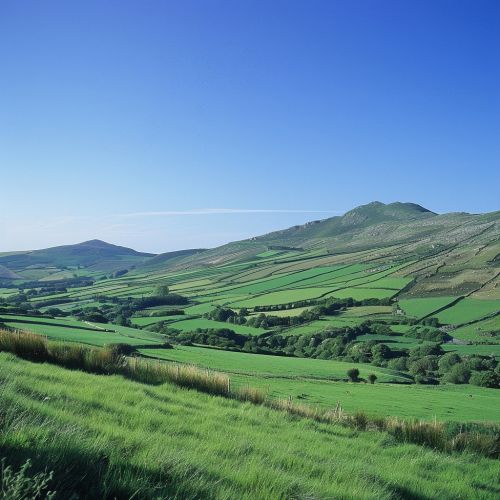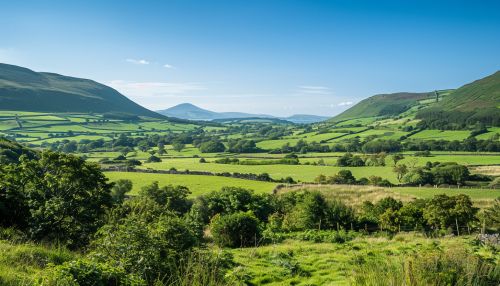Irish Question: Difference between revisions
(Created page with "== Introduction == The "Irish Question" refers to a complex and multifaceted issue that dominated British and Irish politics from the early 19th century until the early 20th century. It encompasses a range of political, social, and economic issues, including the struggle for Irish independence, the quest for [Home Rule](Home_Rule), land reform, and the sectarian conflict between Catholics and Protestants. This article delves into the historical context, key events, and s...") |
No edit summary |
||
| Line 20: | Line 20: | ||
A major obstacle to Home Rule was the opposition from the predominantly Protestant unionists in [Ulster](Ulster), who feared that Home Rule would lead to Catholic domination and threaten their economic and political interests. The formation of the [Ulster Volunteer Force](Ulster_Volunteer_Force) in 1913 and the signing of the [Ulster Covenant](Ulster_Covenant) demonstrated the depth of unionist resistance. | A major obstacle to Home Rule was the opposition from the predominantly Protestant unionists in [Ulster](Ulster), who feared that Home Rule would lead to Catholic domination and threaten their economic and political interests. The formation of the [Ulster Volunteer Force](Ulster_Volunteer_Force) in 1913 and the signing of the [Ulster Covenant](Ulster_Covenant) demonstrated the depth of unionist resistance. | ||
[[Image:Detail-91985.jpg|thumb|center|Scenic view of the Irish countryside with rolling green hills and a clear blue sky.|class=only_on_mobile]] | |||
[[Image:Detail-91986.jpg|thumb|center|Scenic view of the Irish countryside with rolling green hills and a clear blue sky.|class=only_on_desktop]] | |||
== The Land Question == | == The Land Question == | ||
Latest revision as of 18:01, 18 June 2024
Introduction
The "Irish Question" refers to a complex and multifaceted issue that dominated British and Irish politics from the early 19th century until the early 20th century. It encompasses a range of political, social, and economic issues, including the struggle for Irish independence, the quest for [Home Rule](Home_Rule), land reform, and the sectarian conflict between Catholics and Protestants. This article delves into the historical context, key events, and significant figures that shaped the Irish Question, providing a comprehensive and detailed analysis of this pivotal period in Irish and British history.
Historical Context
The roots of the Irish Question can be traced back to the Norman invasion of Ireland in the 12th century, which marked the beginning of English involvement in Irish affairs. Over the centuries, English and later British control over Ireland was consolidated through a series of military campaigns, legal statutes, and political maneuvers. By the 19th century, Ireland was fully integrated into the United Kingdom of Great Britain and Ireland, following the [Act of Union 1800](Act_of_Union_1800).
The Penal Laws
One of the key factors contributing to the Irish Question was the implementation of the Penal Laws in the late 17th and early 18th centuries. These laws were designed to suppress the rights of Catholics and non-Anglican Protestants, effectively disenfranchising the majority of the Irish population. The Penal Laws restricted land ownership, education, and religious practices, creating deep-seated resentment among Irish Catholics.
The Great Famine
The [Great Famine](Great_Famine) of 1845-1852 was a catastrophic event that had profound social and political repercussions. The failure of the potato crop, which was the staple food for the majority of the population, led to mass starvation, disease, and emigration. The British government's inadequate response to the crisis exacerbated tensions and fueled demands for political reform and greater autonomy.
The Struggle for Home Rule
The quest for Home Rule, or self-government within the United Kingdom, became a central issue in Irish politics in the late 19th and early 20th centuries. The Home Rule movement sought to establish an Irish parliament with authority over domestic affairs while remaining part of the United Kingdom.
The Home Rule Bills
The first significant attempt to achieve Home Rule came with the introduction of the [First Home Rule Bill](First_Home_Rule_Bill) by Prime Minister William Ewart Gladstone in 1886. The bill was defeated in the House of Commons, but it marked the beginning of a prolonged political struggle. Subsequent Home Rule Bills were introduced in 1893 and 1912, with varying degrees of success and opposition.
The Ulster Question
A major obstacle to Home Rule was the opposition from the predominantly Protestant unionists in [Ulster](Ulster), who feared that Home Rule would lead to Catholic domination and threaten their economic and political interests. The formation of the [Ulster Volunteer Force](Ulster_Volunteer_Force) in 1913 and the signing of the [Ulster Covenant](Ulster_Covenant) demonstrated the depth of unionist resistance.


The Land Question
Land ownership and agrarian reform were central issues in the Irish Question. The majority of Irish land was owned by a small number of Anglo-Irish landlords, while the vast majority of the population were tenant farmers who faced high rents and insecure tenure.
The Land War
The [Land War](Land_War) of the late 19th century was a period of agrarian agitation and violence, led by the [Irish National Land League](Irish_National_Land_League). The movement sought to achieve fair rents, fixity of tenure, and free sale of tenant interests. The British government responded with a series of Land Acts, which gradually transferred land ownership from landlords to tenants.
The Wyndham Land Act
The [Wyndham Land Act](Wyndham_Land_Act) of 1903 was a significant milestone in the resolution of the Land Question. The act provided for the voluntary sale of estates to tenants, with financial assistance from the government. By the early 20th century, the majority of Irish land had been transferred to tenant ownership, alleviating some of the economic grievances that had fueled the Irish Question.
The Rise of Irish Nationalism
The late 19th and early 20th centuries saw the rise of various nationalist movements that sought to achieve greater autonomy or complete independence for Ireland.
The Gaelic Revival
The [Gaelic Revival](Gaelic_Revival) was a cultural movement that aimed to revive Irish language, literature, and traditions. Organizations such as the [Gaelic League](Gaelic_League) and the [Irish Literary Revival](Irish_Literary_Revival) played a crucial role in fostering a sense of national identity and pride.
Sinn Féin
Founded in 1905 by Arthur Griffith, [Sinn Féin](Sinn_Féin) initially advocated for dual monarchy and passive resistance to British rule. However, following the [Easter Rising](Easter_Rising) of 1916, Sinn Féin adopted a more radical stance, calling for complete independence and the establishment of an Irish Republic.
The Easter Rising and Its Aftermath
The [Easter Rising](Easter_Rising) of 1916 was a pivotal event in the history of the Irish Question. The armed insurrection, led by the [Irish Republican Brotherhood](Irish_Republican_Brotherhood) and other nationalist groups, aimed to end British rule and establish an independent Irish Republic.
The Rising
The Easter Rising began on April 24, 1916, with the seizure of key locations in Dublin by the rebels. Despite initial successes, the rising was quickly suppressed by British forces, and its leaders were executed. The harsh response to the rising galvanized public support for the nationalist cause and led to a significant shift in Irish public opinion.
The War of Independence
The [Irish War of Independence](Irish_War_of_Independence) (1919-1921) was a guerrilla war fought between the Irish Republican Army (IRA) and British forces. The conflict resulted in the signing of the [Anglo-Irish Treaty](Anglo-Irish_Treaty) in 1921, which established the [Irish Free State](Irish_Free_State) as a self-governing dominion within the British Commonwealth.
The Partition of Ireland
The Anglo-Irish Treaty also led to the partition of Ireland, creating the separate political entities of Northern Ireland and the Irish Free State.
The Government of Ireland Act 1920
The [Government of Ireland Act 1920](Government_of_Ireland_Act_1920) established separate parliaments for Northern Ireland and Southern Ireland. While Northern Ireland remained part of the United Kingdom, the Irish Free State gained significant autonomy.
The Civil War
The signing of the Anglo-Irish Treaty led to a split within the nationalist movement, resulting in the [Irish Civil War](Irish_Civil_War) (1922-1923). The pro-treaty forces, led by Michael Collins, supported the establishment of the Irish Free State, while the anti-treaty forces, led by Éamon de Valera, opposed the treaty's terms. The civil war ended with the defeat of the anti-treaty forces, but the divisions within Irish society persisted.
Conclusion
The Irish Question was a complex and multifaceted issue that shaped the political, social, and economic landscape of Ireland and the United Kingdom for over a century. The struggle for Home Rule, land reform, and national identity, as well as the sectarian conflict between Catholics and Protestants, were central to this period of history. The resolution of the Irish Question, through the establishment of the Irish Free State and the partition of Ireland, marked the end of one chapter and the beginning of another in the ongoing story of Irish and British relations.
